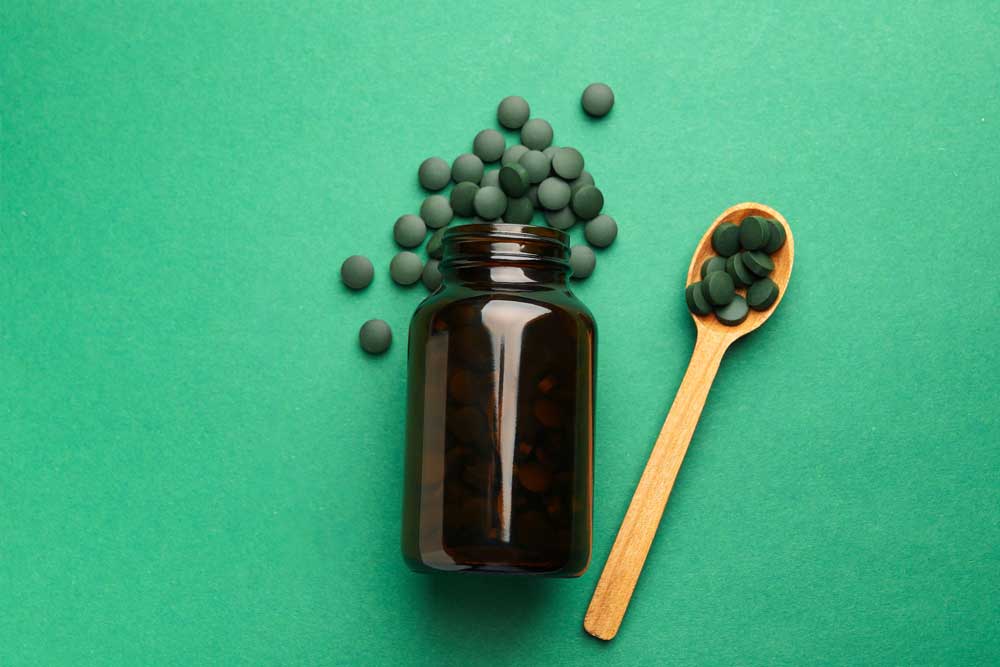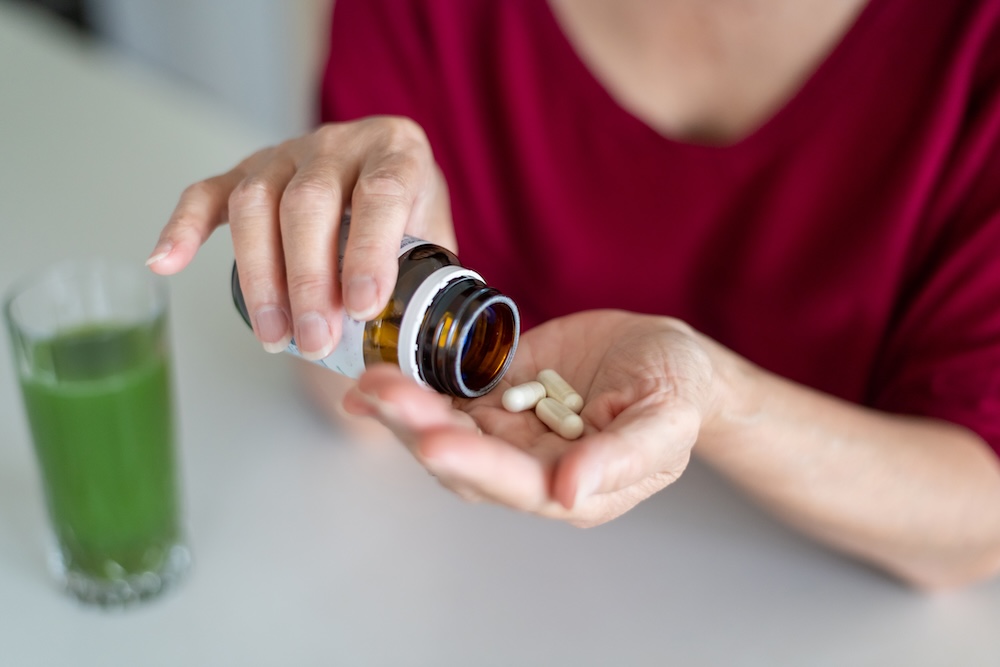Urinary tract infections (UTIs) become more common as we age, especially after menopause. But did you know that when it comes to UTIs during menopause, they can be triggered by sex? Or that there are a few simple things you can do to reduce your risk of getting one? Find out how to minimise your chances of getting a sex-related UTI during menopause with our guide.
Over half of women will have at least one UTI during their lifetime and, other than a peak in the teenage years and early twenties, they become more frequent with age. This is especially true after menopause, with one in 10 postmenopausal women having had a UTI within the past year.
Find what you need quickly
-
What are UTI symptoms?
-
What is the difference between a UTI and cystitis?
-
Why are UTIs more common during menopause?
-
Changes at menopause that make your urinary tract more vulnerable to infection
-
How does sex cause UTIs?
-
Top tips for preventing UTIs during sex
-
Treating UTIs
-
Does cranberry juice and D-mannose help UTIs?
-
When should you see a doctor?
-
What can you do about recurring UTIs?
-
How I managed my recurrent UTIs during perimenopause
-
Final word
Start your free online menopause assessment to see if HRT is right for you
What are UTI symptoms?
Most UTIs announce their presence with:
- A burning or stinging sensation on peeing
- A need to pee more often (even if you pass only small amounts)
- Changes to the urine itself including a strong smell, cloudiness and a pink or red tinge (due to the presence of blood)
Other signs include pain or discomfort in the bladder area and feeling generally unwell. See our symptoms library for more information on urinary incontinence.
Read more about UTIs in our symptoms library.
What is the difference between a UTI and cystitis?
There are subtle differences between UTIs and cystitis, although these terms are often used interchangeably.
UTI is a general term referring to an infection anywhere in your urinary tract. This includes your:
- Kidneys
- Ureters – which connect your kidneys to the bladder
- Bladder
- Urethra – which drains your bladder when you pee
In contrast, cystitis refers to an infection of your bladder only.
Most UTIs, including cystitis, present with the same symptoms. These include:
- Discomfort – either in your tummy or when you pee
- Needing to pee more often
- Discoloured or smelly urine
Infections in your kidney can be more serious, and may be associated with vomiting, shivering and back pain among others.
Why are UTIs more common during menopause?
UTIs are caused by growth of bacteria in the urinary tract. This includes the kidneys, ureters (which connect the kidneys to your bladder), bladder and urethra (the tube which connects the bladder to its opening at the front of your vagina). Unfortunately, bacteria are amazing at getting into the urinary tract by travelling up the urethra from your genital area, especially thanks to the changes seen in this area of your body during your menopause journey. There are quite a few changes that, unfortunately, make getting a UTI more likely during menopause.
Changes at menopause that make your urinary tract more vulnerable to infection
1 Skin thinning
The tissues of your bladder, urethra and vagina are rich in oestrogen receptors, meaning that this hormone keeps them plump and healthy during premenopausal life. However, these tissues can become thinner and more sensitive when oestrogen levels decline around menopause. This makes it easier for bacteria to grow and cause repeated UTIs.
2 Decrease in vaginal flora variety
Premenopause, the vagina and area around the urethral opening is colonised by many different types of bacteria – vaginal flora – which live together in a delicate balance to keep the tissues healthy and ‘bad bacteria’ responsible for UTIs in check. As oestrogen levels decrease during menopause, so does the variety of bacteria in this area of your body which makes it easier for more troublesome bacteria to colonise vulnerable tissues (like your vulnerable urinary tract)
3 Challenging menopause symptoms
Vaginal dryness, burning, tightness, painful sex and discharge are collectively known as the genitourinary syndrome of menopause (GSM) or vaginal atrophy. They are thought to affect the majority of women who have been through menopause.
How does sex cause UTIs?
Thrusting can drive bacteria from your genital area into your urethra and bladder, where they are most definitely not welcome. This is particularly a problem for women as the urethra is much shorter than in men.
Top tips for preventing UTIs during sex
It is frustrating that sex during menopause can increase your risk of getting a UTI but, don’t panic! It doesn’t mean you need to take a vow of celibacy. There are plenty of simple things you can do to reduce your risk of getting a UTI during menopause and continue enjoying a healthy sex life.
- Go to the loo: Peeing before and, especially, after sex helps to clear any bacteria from your bladder and urethra
- Wash yourself: Gently washing your genital area with water before sex can help to keep yourself clean, although it is important to avoid harsh soaps which may affect this delicate area. Also, avoid washing internally – the delicate tissues of the vagina are easily irritated and the bacteria that live there generally do a good job of keeping invaders out
- Look after your sex toys: Make sure they are cleaned after each use, as they can attract bacteria
- Plan sex carefully: Having vaginal sex straight after anal sex can increase your risk of UTIs, as it can spread bacteria from your anus to your urinary tract. Changing the condom or washing both of you in between is a good way to reduce spread
Treating UTIs
Antibiotics are still the best treatment for any current UTI and a short course usually clears things up within a few days. If UTIs are a recurrent problem for you, talk to your doctor.
Does cranberry juice and D-mannose help UTIs?
Many people use these natural supplements as treatments for UTIs but there is mixed evidence on whether they can help.
Cranberry juice and UTIs
Medical opinion is divided about cranberry juice’s effectiveness in treating or preventing UTIs and studies have shown mixed results. As there is no clear evidence, don’t waste your money on cranberry products as they are not recommended at present. Although, if you enjoy them as part of your normal diet, they are a good source of vitamins and minerals, including Vitamin C.
Avoid taking these products if you are prone to kidney stones (as they are rich in stone-forming oxalates) and if you are taking warfarin (as they can interfere with this medication).
D-Mannose and UTIs
This is a kind of sugar which can be bought without prescription as tablets or in powder form, and is taken daily. There have only been a few small studies on the use of D-Mannose and, although these have generally shown a beneficial effect, it is not routinely recommended by doctors.
Be wary of buying anything from the internet as formulas and preparations vary. You can add a natural source of D-Mannose to your diet by eating more cranberries (although be aware of the medical advice under our cranberry juice section), apples, oranges, peaches, broccoli and green beans.
When should you see a doctor?
As soon as you feel UTI symptoms, it’s important to see your doctor quickly, especially if you:
- Could be pregnant (as UTIs can spread more quickly in pregnant people)
- Have any kidney conditions (including chronic kidney disease or renal failure)
- Have underlying medical conditions which can make you more vulnerable to infection – including being on steroids or any other immune suppressants
Less commonly, UTIs can spread upwards into the kidneys, an infection known as pyelonephritis which sometimes needs hospital treatment.
You should also see a doctor as soon as possible if you have:
- Pain in your back or sides
- Nausea or vomiting
- High temperatures with shivering
- Feeling generally unwell along with other signs of a UTI
- Any other new, unusual or worrying symptoms including a racing heartbeat, dizziness, feeling lethargic or peeing less than usual.
If you see any blood in your urine, you should call your doctor and arrange an appointment as soon as possible as it can be a sign of underlying health conditions. This can range in appearance from a pinkish tinge to bright red urine, or even clots of blood.
It is important to do this even if you only noticed the blood once, as it still needs investigating properly. Your GP may test your urine sample (to check for blood not visible to the naked eye), or refer you on for further tests.
Start your free online menopause assessment to see if HRT is right for you
What can you do about recurring UTIs?
If you keep getting a UTI during menopause or at any other time in your life, it’s important to see your doctor so they can check if there is any underlying cause for your repeated infections, and whether there is anything they can do to help prevent it. While this can be an uncomfortable topic to discuss with your doctors, these issues are extremely common. Proper treatment should help you to enjoy your sex life once more, without the worry that you will end up with another UTI.
Bacteria identification
Your doctor may want to check which type of bacteria is causing your symptoms by sending a urine sample to the lab. The most common cause of UTIs are common bacteria like E. coli. Others that need a different treatment approach can cause similar symptoms, including some sexually transmitted infections like chlamydia and gonorrhoea.
Genitourinary syndrome of menopause
This is also a good opportunity to talk about menopausal symptoms, especially if you have any signs of the genitourinary syndrome of menopause, including tightness, itching, burning, dryness and pain on having sex.
These can be associated with recurrent UTIs and can be treated effectively with low-dose oestrogen creams or tablets, which are applied directly to the vagina and genital area. This is a low-dose, low-risk form of hormone replacement therapy, which is suitable for most people – the main exceptions being if you have breast cancer or undiagnosed vaginal bleeding.
Ruling out other causes
Your doctor may also want to check for underlying health conditions by doing blood tests or ultrasound scans. In some circumstances, they may also want to refer you to a urologist for further tests.
Preventative treatment
Some women may benefit from a preventive antibiotic. This can either be taken once per day or after sex, although the risks of developing antibiotic resistance need to be carefully weighed against the benefits of long-term antibiotic use.
Personal story: How I managed my recurrent UTIs during perimenopause
In my mid-40s I started having UTI symptoms every time I had sex. I felt I was always at the doctor and had 11 courses of antibiotics to treat UTIs in one 12-month period. I can’t describe the sheer humiliation of having to go to the loo every 30 minutes – it limited enjoyment of life and put me off sex. My doctor really helped me try different ideas and we worked out it was latex and some lubes that triggered it. My husband had a vasectomy so we didn’t have to worry so much about contraception and it has made a huge difference! Also, I always pee after sex!”
Final word
As this woman’s story highlights, it isn’t always so easy to get to the root cause of recurrent UTIs. Sometimes it takes a little time and lateral thinking!
Find out more about menopause on our blog or in our symptoms library.












